Welcome To Our Irrigation Library!
Smart Solutions for Lawn Watering: Exploring Irrigation Methods
The allure of emerald green turf makes lawn irrigation a focal point for irrigation product manufacturers and designers, and our company is no exception. With professional design, these units provide effective and even coverage.
Popup sprinklers
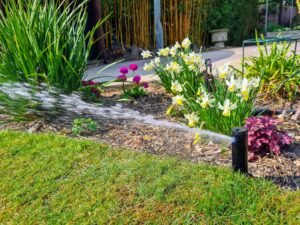

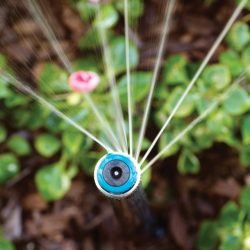
Lawn areas are typically irrigated using popup sprinklers, known for their discreet operation. These units remain hidden in the ground, emerging with small stems that spray water across the lawn when the zone activates.
When the zone with it is getting water pressure, its mechanism raising the stem above the surface. There is a specially designed part, called nozzle on the top end of the stem. That supplies the water out as a jet to the desired area. Design of the nozzle makes possible to supply the water evenly along with the jet. Whilst the sprinkler is under pressure, the stem is rotating around. The jet covers a circular area with the popup in its origo.
There are different popups and nozzles are manufactured for satisfying all demands regarding water flows and area sizes. Some of them has one, two or several jets, and some of them just spraying around in the desired angle.
Once done, the heads retract into the earth, leaving the lawn undisturbed. Water is delivered to them through underground pipes, necessitating careful installation by cutting into the grass area.
Sprinklers are commonly used for lawn irrigation but they can be used to supply water for perennials or shrub beds as well.
Special demands like keeping away of wild animals (eg foxes) can also be sorted with sprinklers (under other conditions).
Considering economical viewpoints and due to possibly fragmented lawn edges, the sprays might overlap patios/terraces/sideways, but the hard surfaces will be affected as small as possible. Also some overspraying at concreted edges is recommended on warm summer days to avoid the burn-out of lawn.
Subsurface drip
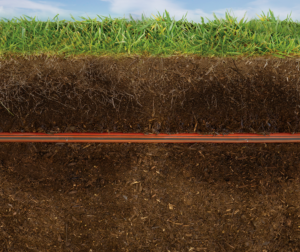
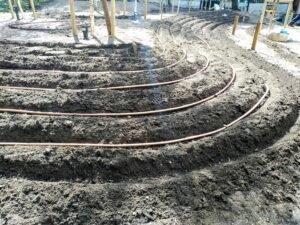
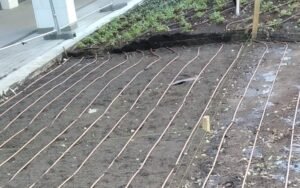
In exceptional cases where water spraying is restricted, a subsurface drip system (known from bed irrigation) may be considered before topsoil levelling. However, due to its higher cost, this solution is not recommended in standard scenarios.
Lines run under the lawn in 10cm depth and supply even coverage for the shallow-rooted fine lawn. These driplines can be covered by soil because their special properties prevents the roots to grow in the pipe via the drip holes.
You have to make sure of that the pipes won’t be damaged by aeration at later maintenance of the lawn. Hence the tillage depth cannot be deeper than 7.5cm (3″) at this kind of lawn treatment.
Know Our Ultimate Pot Irrigation Solutions As Well!
